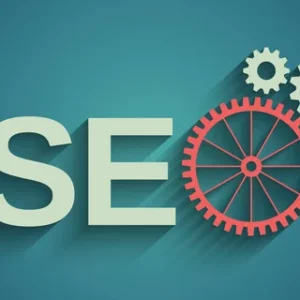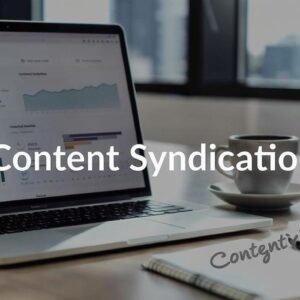In the world of B2B sales, BANT has long been considered the gold standard for qualifying leads. Originating decades ago, this framework covering Budget, Authority, Need, and Timeline helped sales teams focus on prospects most likely to convert. However, in today’s fast-paced digital environment, BANT isn’t what BANT was. The traditional approach of ticking boxes is no longer enough. Relying solely on it can limit opportunities in a market where buyers have access to more information and decision-making power than ever before.
Changing Buyer Behavior
One of the most significant changes is the shift in buyer behavior. Modern B2B buyers often complete the majority of their research before interacting with a sales representative. They explore multiple solutions, compare features, and even discuss internally before reaching out. This self-directed research means that a prospect may have the budget, authority, and need but may not align with the timeline or urgency that traditional BANT emphasizes. Therefore, sales teams must evolve their qualification methods to stay relevant.
The Complexity of Modern Organizations
Another key factor is the complexity of modern buying organizations. While BANT assumes a single authority figure, today’s decisions often involve multiple stakeholders. Influencers, decision-makers, technical evaluators, and procurement specialists all contribute to the buying process. This layered approach challenges the simplistic Authority aspect of BANT, making it essential for sales professionals to engage in account-based strategies and stakeholder mapping.
Technology’s Role in Lead Qualification
Technology has also redefined how leads are qualified. Advanced CRM systems, predictive analytics, and AI-powered tools allow sales teams to gather deeper insights beyond the BANT checklist. For example, intent data can reveal whether a prospect is actively researching solutions or merely exploring options for future consideration. This level of granularity enhances the Need and Timeline aspects, allowing teams to prioritize leads more effectively and focus efforts where they have the highest potential return on investment.
BANT as a Starting Point
Despite its limitations, BANT still holds value as a starting point. Understanding a prospect’s budget, authority, need, and timeline provides a structured lens through which to evaluate opportunities. However, today’s sales landscape requires integrating additional factors such as engagement level, behavioral signals, and the strategic fit of the solution with the prospect’s business objectives. By expanding BANT into a more nuanced framework, sales professionals can maintain its clarity while adapting to modern realities.
Complementary Qualification Frameworks
Modern sales organizations increasingly use frameworks like MEDDIC (Metrics, Economic Buyer, Decision Criteria, Decision Process, Identify Pain, Champion) or CHAMP (Challenges, Authority, Money, Prioritization) as complementary or alternative approaches. These models account for multiple stakeholders, deeper pain points, and measurable outcomes. By combining BANT with these frameworks, companies can build a more holistic view of their prospects, identifying not just whether they are qualified but how likely they are to achieve success with the solution.
Re-examining the Need Component
The Need element of BANT also requires re-examination. In the past, sales teams primarily focused on explicit pain points, assuming that if a prospect expressed a challenge, the solution would follow naturally. Today, buyers often have multiple priorities, competing initiatives, and complex workflows. Sales professionals must engage in consultative conversations, exploring both explicit and implicit needs, aligning solutions with strategic goals rather than just immediate problems. This approach strengthens credibility and fosters longer-term partnerships.
Budget in the Modern Sales Environment
Budget considerations have shifted as well. Historically, BANT assumed that the budget was a straightforward yes or no check. However, with subscription-based models, SaaS solutions, and evolving procurement processes, budget conversations are more dynamic. Buyers may reallocate funds, approve pilots before full adoption, or look for ROI-based justification. Understanding the prospect’s financial flexibility and willingness to invest over time is critical, making Budget a more sophisticated and ongoing dialogue rather than a static checkbox.
Timeline Adaptations
Timeline is another area where traditional BANT falls short. Sales teams once expected clear project deadlines and implementation windows. Today, timelines can be fluid, with internal approvals, phased rollouts, or multi-year transformation plans. Sales professionals must be agile, understanding not only the prospect’s target dates but also the underlying business drivers and dependencies. Flexibility in the timeline allows sales teams to maintain engagement, nurture relationships, and position themselves as trusted advisors rather than just vendors.
Authority in the Modern Buying Process
Authority has arguably seen the most significant evolution. The rise of collaborative decision-making and decentralized purchasing authority means that identifying a single economic buyer is no longer sufficient. Engaging multiple stakeholders, building consensus, and identifying internal champions within the organization are essential steps. This approach ensures that solutions resonate with the broader team, reducing the risk of stalled deals and enhancing adoption once the contract is signed.
Leveraging Data and Insights
Integrating BANT with marketing and sales intelligence tools further strengthens the qualification process. Data from website interactions, email engagement, social media activity, and industry signals can provide context that traditional BANT could never capture. By combining quantitative and qualitative insights, sales teams can prioritize leads with precision, ensuring resources are allocated efficiently and effectively.
Embracing Continuous Adaptation
Recognizing that BANT isn’t what BANT was means embracing a mindset of continuous adaptation. While the core principles of Budget, Authority, Need, and Timeline remain relevant, they must be interpreted within a broader context of modern buyer behavior, organizational complexity, and technological capabilities. Forward-thinking companies are reimagining BANT, integrating new frameworks, and leveraging data-driven insights to ensure that lead qualification remains both rigorous and relevant.
Personalized Selling and Modern BANT
The evolution of BANT also reflects the broader trend of personalized selling. Prospects expect solutions tailored to their unique challenges and objectives. A rigid BANT checklist may overlook critical nuances that influence buying decisions. By adopting a flexible, consultative approach, sales teams can uncover deeper insights, demonstrate empathy, and deliver value that resonates with today’s empowered buyer.
About Us : Acceligize is a global B2B demand generation and technology marketing company helping brands connect with qualified audiences through data-driven strategies. Founded in 2016, it delivers end-to-end lead generation, content syndication, and account-based marketing solutions powered by technology, creativity, and compliance.






